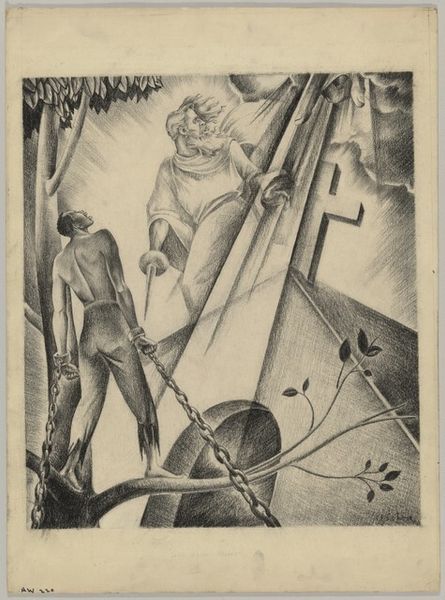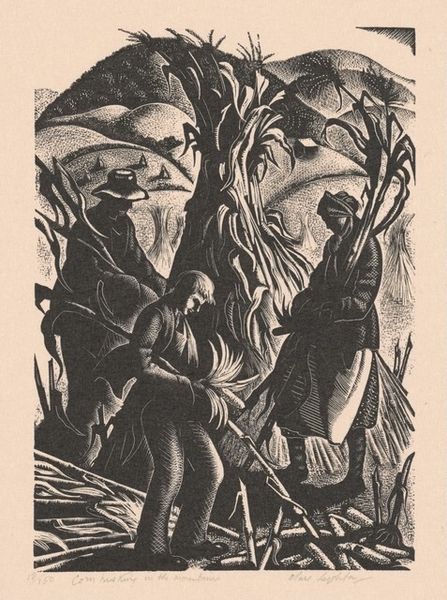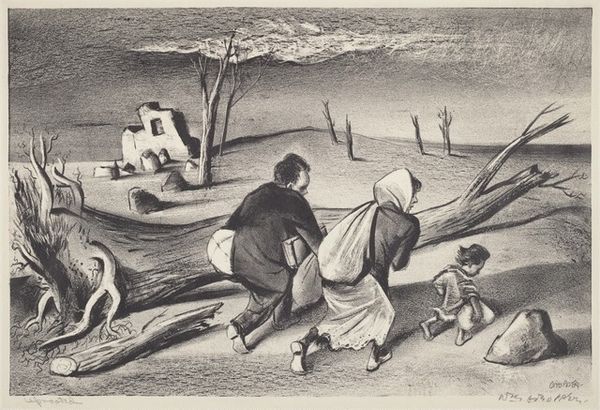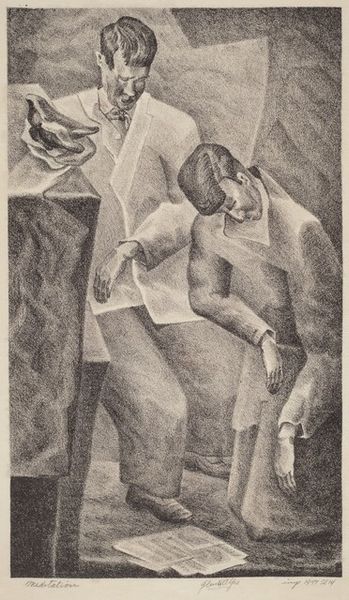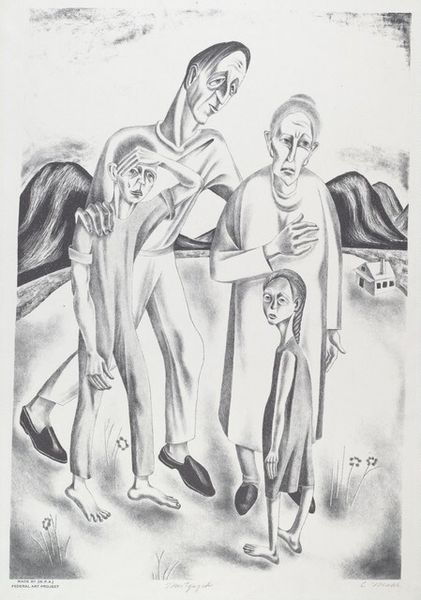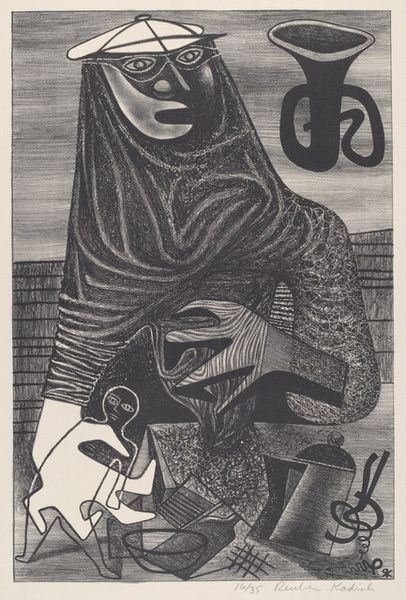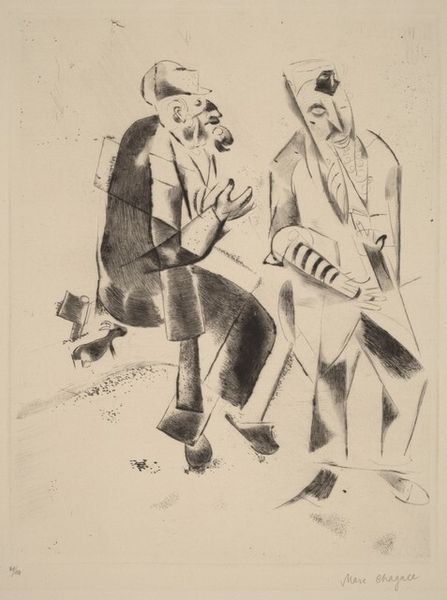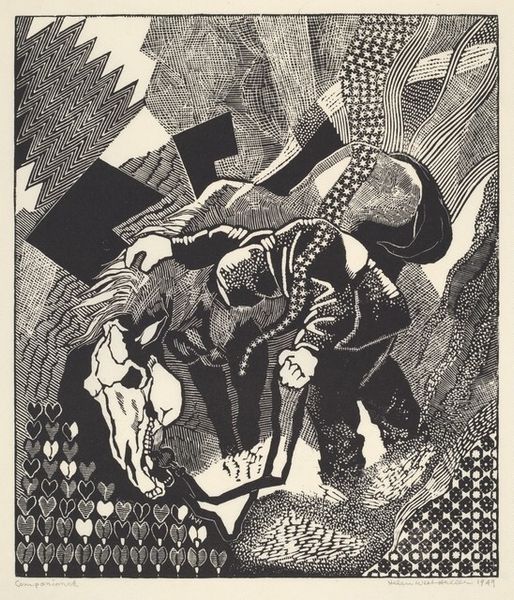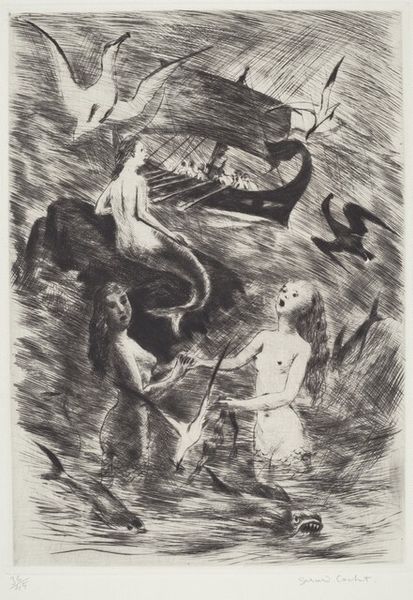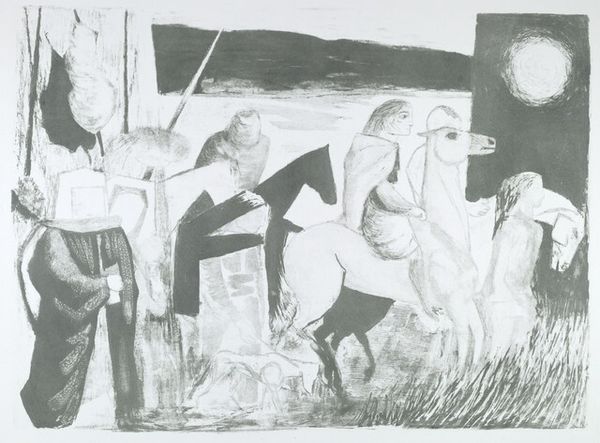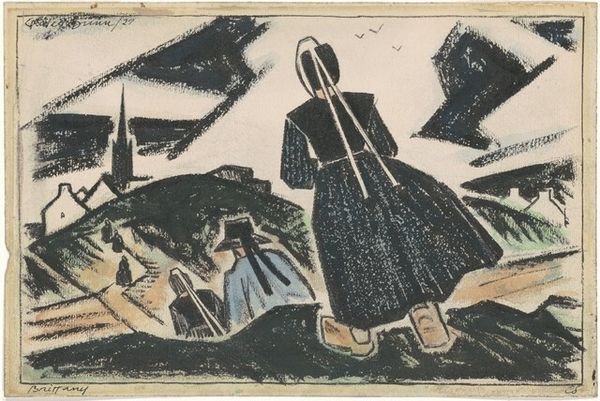
drawing, print, graphite
#
drawing
#
narrative-art
# print
#
caricature
#
caricature
#
figuration
#
social-realism
#
graphite
#
portrait drawing
#
history-painting
#
regionalism
Dimensions: image: 444 x 340 mm sheet: 470 x 370 mm
Copyright: National Gallery of Art: CC0 1.0
Curator: Oh, my! The tension practically vibrates off this print. The body language is almost theatrical. Editor: You've zeroed right in. We are looking at Claire Mahl Moore’s, “Scene in Texas Slavery Days,” likely created between 1935 and 1943. It’s a powerful piece rendered in graphite, calling to mind a particularly grim chapter of American history. Curator: Slavery, of course, but this goes further. Notice how the artist depicts those who benefitted? The drawing reduces their figures to caricatures, stiff, grotesque and frankly devoid of humanity. It's a biting indictment. Editor: Absolutely. Caricature, especially here, serves a really interesting purpose. Exaggerated features can reflect not only physical appearance but the internal state – amplifying greed, callousness, or obliviousness. Those oil derricks in the background aren't accidental; they become visual metaphors of exploitation, like insatiable giants looming over the scene. Curator: And there is so much anxiety here! Everyone looks so on edge: they refuse to meet the others' gaze. Look at the slight blurring of edges that enhances the unsettling effect and almost suggests guilt...or maybe complicity. What's with those spectral figures way in the back? Editor: Spectral is the right word! Moore uses visual motifs related to traditional history paintings and combines those with Regionalist tendencies and even some Social Realism—in part through symbolism and recurring imagery – which invite questions of memory, both personal and collective. This haunting assembly seems to suggest the countless untold stories, a silent chorus of witnesses, forever impacted. This might be more of a personal, imaginative history painting than a detached view. Curator: Exactly. I thought it had that air! It strikes me as much more heartfelt and personal, and less like propaganda... What do you think the artist wanted us to carry away? Editor: I think, as an iconographer, that this is a brave example of how to visualize shared trauma, even today. Not as a relic of the past but as a lingering shadow—maybe even a goad to examine how such imbalances play out, subtly, now. Curator: What you’re describing resonates very well. To me, it’s not about closure but rather acknowledging and remembering. That history keeps a constant conversation going, both now and into the future.
Comments
No comments
Be the first to comment and join the conversation on the ultimate creative platform.

